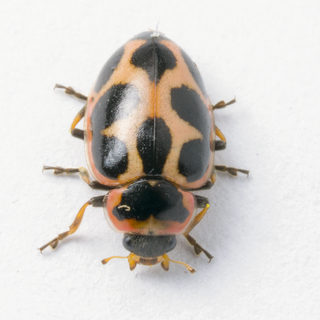
Teri Hatcher is an American actress best known for her portrayals of Lois Lane on the television series Lois & Clark: The New Adventures of Superman (1993–1997); Paris Carver in the James Bond film Tomorrow Never Dies (1997); and Susan Mayer on the television series Desperate Housewives (2004–2012), for which she won the Golden Globe Award for Best Actress in a Musical or Comedy and three Screen Actors Guild Awards, and was nominated for a Primetime Emmy Award for Outstanding Lead Actress in a Comedy Series.

Gilera is an Italian motorcycle manufacturer founded in Arcore in 1909 by Giuseppe Gilera (1887–1971). In 1969, the company was purchased by Piaggio.

Brands Hatch is a motor racing circuit in West Kingsdown, Kent, England, United Kingdom. Originally used as a grasstrack motorcycle circuit on farmland, it hosted 12 runnings of the British Grand Prix between 1964 and 1986 and currently hosts many British and International racing events. The venue is owned and operated by Jonathan Palmer's MotorSport Vision organisation.

The small dusty wave is a moth of the family Geometridae first described by Franz von Paula Schrank in 1802. It is found throughout Western, Central and Northern Europe. In the north, its range extends as far as Denmark and southern Scandinavia. In the east its range extends as far as Russia. Idaea seriata is replaced by the subspecies Idaea seriata canteneraria, from the north-east of Spain and the central and eastern Mediterranean to the Crimean peninsula, while the western Mediterranean and the Balearic Islands are inhabited by the sister species Idaea minuscularia. Outside Europe it is found in eastern Algeria, Tunisia, Turkey, Cyprus, the Caucasus and the northwest of Transcaucasia. In Morocco and western Algeria, it is replaced by the sister species Idaea minuscularia. In the British Isles it is common in England and Wales but is only found in the eastern half of Scotland and it is rare in Ireland.
Ceraurinella is an extinct genus of trilobite in the family Cheiruridae. There are about 19 described species in Ceraurinella.

Cymindis is a genus of ground beetle native to the Palearctic, the Near East, and North Africa. It contains the following species:
Aspilapteryx seriata is a moth of the family Gracillariidae. It is known from South Africa.

Continenticola is a clade that includes the land planarians (Geoplanidae) and the freshwater triclads.
Cymindis elegans is a ground beetle species in the genus Cymindis, in the subfamily Lebiinae and tribe Lebiini. It is found in Virginia in the United States.

Geoplanoidea is a superfamily of freshwater and land triclads that comprises the species of the Geoplanidae and the Dugesiidae families.

Cymindis axillaris is a species of ground beetle in the subfamily Harpalinae. It was described by Johan Christian Fabricius in 1794.

Cymindis cincta is a species of ground beetle in the subfamily Harpalinae. It was described by Brulle in 1839.
Cymindis cribricollis is a species of ground beetle in the subfamily Harpalinae. It was described by Pierre François Marie Auguste Dejean in 1831.

Cornelia Hatcher (1867–1953) was an American suffragist and temperance activist. In 2009, Hatcher was named to the Alaska Women's Hall of Fame.
Diplodia seriata is an anamorphic fungus species in the genus Diplodia. It is a cause of bot canker of grapevine in Mexico.

Melaleuca seriata is a shrub in the myrtle family, Myrtaceae, and is endemic to the south-west of Western Australia. In describing it, John Lindley wrote "Melaleuca seriata, parviceps, and trichophylla, are bushes, every twig of which is terminated by hemispherical heads of a brilliant pink." It is very similar to Melaleuca parviceps.
Syneta seriata is a species of leaf beetle. It is found in North America. It feeds on California live oak and California black oak.

Naemia seriata, commonly known as the seaside lady beetle, is a large coccinellid beetle native to North America, and the only species in the genus Naemia. It is found in coastal areas such as beaches, salt marshes, and bay islands on the Atlantic and Pacific coast. This beetle is light brown, yellow, orange, or red in color, with large black spots, often connected along the sides. The pronotum usually has one large central black spot, which is occasionally split into two spots. The body of this species is elongately oval in shape, and between 4 and 6.7mm in length. The two subspecies can be distinguished by markings on the head, with the head of N. seriata seriata being black, while the head of N. seriata litigiosa has a pale triangular marking. Naemia seriata seriata is primarily distributed across Eastern North America, while N. seriata litigiosa is restricted to the American Southwest.
Buskia is a genus of bryozoans belonging to the family Buskiidae.

Philonotis seriata is a species of moss belonging to the family Bartramiaceae. It is widely distributed in Europe but it is also found in other parts of the world.












